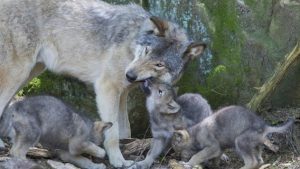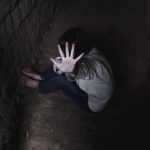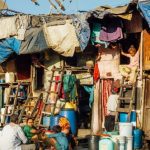 Animals
Animals  Animals
Animals  Facts
Facts Ten Unexpectedly Fascinating Facts About Rain
 Crime
Crime 10 Dark Details of Australia’s Gruesome Unsolved Wanda Murders
 Humans
Humans 10 Unsung Figures Behind Some of History’s Most Famous Journeys
 Animals
Animals 10 Species That Refused to Go Extinct
 Weird Stuff
Weird Stuff 10 Weird Things People Used to Do at New Year’s
 Our World
Our World 10 Archaeological Discoveries of 2025 That Refined History
 Weird Stuff
Weird Stuff 10 Fascinating Facts You Might Not Know About Snow
 Miscellaneous
Miscellaneous Top 10 Things Crypto Was Supposed to Change & What Actually Did
 History
History 10 Huge Historical Events That Happened on Christmas Eve
 Animals
Animals 10 Strange Times When Species Evolved Backward
 Facts
Facts Ten Unexpectedly Fascinating Facts About Rain
 Crime
Crime 10 Dark Details of Australia’s Gruesome Unsolved Wanda Murders
Who's Behind Listverse?

Jamie Frater
Head Editor
Jamie founded Listverse due to an insatiable desire to share fascinating, obscure, and bizarre facts. He has been a guest speaker on numerous national radio and television stations and is a five time published author.
More About Us Humans
Humans 10 Unsung Figures Behind Some of History’s Most Famous Journeys
 Animals
Animals 10 Species That Refused to Go Extinct
 Weird Stuff
Weird Stuff 10 Weird Things People Used to Do at New Year’s
 Our World
Our World 10 Archaeological Discoveries of 2025 That Refined History
 Weird Stuff
Weird Stuff 10 Fascinating Facts You Might Not Know About Snow
 Miscellaneous
Miscellaneous Top 10 Things Crypto Was Supposed to Change & What Actually Did
 History
History 10 Huge Historical Events That Happened on Christmas Eve
Ten Incredibly Unsettling Stories of Feral Children
We all know more or less what a feral child is, right? It’s a child who is isolated from society and human contact entirely or nearly entirely from a very young age. In turn, they don’t reach all the development markers that a normal human baby and child would. They don’t learn to speak, walk, share, communicate, and display their emotions in any way that is similar to a “normal” child.
Since most feral children are raised by animals—how else would they survive their early years if not for some kind of help—they can very often take on some of the characteristics of the animals around which they are reared. Creepy, right?
The phenomenon of feral children isn’t just an urban legend, either. Yes, there are indeed plenty of feral child stories out there that turn out to be utterly bogus upon further investigation. But there are plenty more than are legit. That’s what we’re after in this list below. Today, we’ll go through the unsettling and jaw-dropping tales of ten feral children who were raised by animals and turned out very, very different from their peers. Some of these stories may haunt your dreams for several nights to come every time you lay your head on the pillow. So, consider yourself warned!
Related: 10 Abducted Children Who Found Their Way Home Decades Later
10 Marina Chapman
Let’s start you off with a really weird one, shall we? In the 1950s, a young girl named Marina was living in Colombia. This was during a turbulent time in the country’s history known as “La Violencia.” During that long-running violent and anarchistic period, millions of children were reportedly kidnapped from their homes.
Among the political infighting going on in the South American nation, kids were being taken from families and held for ransom—or just outright stolen altogether. Supposedly, as just an innocent little five-year-old, Marina was one of them.
According to her, she was taken from her village—the name of which she doesn’t remember because she was too young to log it in her brain, apparently—in a kidnapping. But for some reason, instead of being held by her captors, she was abandoned deep in the Colombian jungle. What happened next seemed unreal.
Apparently, a large group of capuchin monkeys found her, protected her from the dangers of the rainforest, and raised her over the next four years. Finally, after her ninth birthday, a group of hunters who were moving through a remote and densely forested part of Colombia supposedly found her. She had no human language acquisition by then but supposedly quickly learned it once exposed to other people once again.
Marina’s story supposedly doesn’t end there. Later in her childhood, she was allegedly sold to the owners of a brothel in the city of Cúcuta. But instead of being able to make money off her, they eventually booted her out of the place—supposedly because she was too feral. She then took to living on the streets of the city. Then, in another strange twist, she claims to have been made a child slave to a mafia family that was influential in Colombia.
Against all odds, after all these supposed situations, Marina grew up to become a mostly normal human being. She was eventually rescued by a sympathetic neighbor and then left Colombia. In time, by using that neighbor’s connections, she moved to England. Now, she has a family and a husband—and she’s written a book about her experience as a feral child. Do you believe her story?[1]
9 Robert Mayanja
Robert Mayanja was born in the early 1980s in a very small village in the African nation of Uganda. Unfortunately for him and everyone around him, he was born at the beginning of the brutal and long-lasting Ugandan Civil War. Not long after his birth, in 1982, soldiers who were part of then-Prime Minister Milton Obote’s national faction fighting against insurgents raided Robert’s village, which was about 50 miles (80.5 kilometers) away from the nation’s war-torn capital city of Kampala.
During the raid, Robert’s parents were among the many villagers killed. Thankfully, Robert’s life was spared, but the child’s story quickly got even more complicated. In the chaos of the raid and the uncertainty of the Civil War, Robert was cast out into the bush. There, against all odds, he was reportedly found by a group of vervet monkeys. They raised the small child, gave him food, and offered him protection out in the wilds of the great outdoors.
Over the next three years, then, that’s how he lived: under the unlikely and group-based care of a set of vervet monkeys. Finally, after more than 36 months of being raised in that manner, a group of soldiers from the National Resistance Army came across Robert and returned him to society.
Unfortunately, he struggled mightily for years afterward to adjust back to human life and the way of the modern world. But at least he was safe from the wilds of Africa and its many, many threats.[2]
8 Saturday Mthiyane
Saturday Mthiyane, who was also sometimes known by the spelling Saturday Mifune, was a young boy who was found in 1987 in the rural outdoors outside a small village in KwaZulu-Natal, South Africa. He was estimated to be about five years old at the time he was found. He’d been living with monkeys in KwaZulu-Natal and had no other human contact readily available to him.
The villagers who found him decided to name him Saturday after the day on which he was discovered. And since he couldn’t talk and had no access at all to language or any human-like emotional processing, they were mostly at a loss for what to do with him. Thankfully, the headmistress of a local school in a nearby village decided to take in the boy and adopt him. She struggled mightily to raise him, though.
Over the next decade, Saturday was given all the care and developmental focus that would be given to any normal child. But sadly, it didn’t take. By his 17th birthday, he still couldn’t talk, let alone ever being able to read and write. He wasn’t able to communicate with other humans in ways besides how a monkey might communicate. He even still walked, jumped, and moved around like a monkey.
He ignored other children and teenagers as he grew up and refused to play or interact with them. And he was highly suspicious of cooked food, refusing to eat it at all costs and instead preferring fruits and other natural items. Saturday’s story ends sadly, too. Reportedly, in 2005, he was killed in a fire.
While details about the supposed inferno are hard to come by, it’s clear from prior reports that his tale is one of woe from the very beginning. Nobody knows how he came to live with the monkeys in the first place or what the circumstances were with his parents that led him to that point. Whatever the case, he wasn’t able to be saved from the wilds of a feral life even after being taken in by the gentle and generous headmistress. And then he died so young. It’s a true tragedy all around.[3]
7 John Ssebunya
The story of John Ssebunya is one of the saddest and most heart-wrenching on this list. He’s another example of a child in Uganda who was lost to the wilds after his parents died. In John’s case, the tragedy began amid a terrible domestic dispute. One day, when John was just a small child, his father killed his mother. Then, distraught over the end of their fiery relationship, John’s father hanged himself.
The cruel duel act left John an orphan at a very young age. But instead of going to a care facility, he slipped through the cracks of Uganda’s porous child support system. He somehow went off into the wild. Thankfully, though, he was found by a pack of vervet monkeys and cared for and protected. Over the next two years, from the time he was around five years old until after his seventh birthday, he lived in tandem with the monkeys.
They taught him how to forage for food and how to travel safely. They protected the young boy from the dangers of the forest and made sure he had enough food to eat. Then, when he was around seven years old, he was found by other villagers nearby where he’d been living. They brought him back into civilization and nursed him very carefully until he was in a far better state than he’d been in the past.
It took a long time to come to that, though. As a young child, in those first few years after he was brought back into the village, all he could really do was either cry or demand food. Other villagers saw him as the “wild boy” from the woods and were terrified of him.
In time, though, he picked up the ability to speak and communicate. The edges were smoothed out and ironed over, and he became a fully functioning member of society. And as if that isn’t cool enough, he also went on to compete twice in the Special Olympics representing Uganda. What a story![4]
6 Dina Sanichar
Dina Sanichar was born in India in 1860 or 1861 and lived his early years as an entirely feral boy. He was first discovered at around the age of six or seven by a group of hunters who were roaming around for game. They came across a cave in the Bulandshahr region of Uttar Pradesh. There, they found Sanichar living among a pack of wolves. They were able to rescue him from his wolf family and pull him back into society.
Nobody knew exactly how he had come to be there or what circumstances led to him living with the wolves. He was completely feral, though. He couldn’t speak, he had no knowledge of the language or human customs, and he acted wildly in the presence of authorities. Confused about what to do, officials sent him off to the Secundra orphanage in the town of Agra.
At that orphanage, he was given the name Sanichar, which means Saturday, because that was the day on which he arrived. (Sounds similar to the story of Saturday Mthiyane, doesn’t it?) Over the next few decades, he continued to live like a feral human, even while being among others in civilization. He walked on all fours only for years and reportedly ate nothing but raw meat.
He couldn’t speak and never learned how. Instead, he made wolf-like sounds throughout his life. Despite remaining seriously impaired and underdeveloped as the years wore on, he did pick up one human skill: smoking. In the end, his lungs proved too weak to last very long, and the smoking certainly didn’t help. He died of tuberculosis in 1895 when he was thought to be around 34 years old.
Sanichar’s story doesn’t completely end there, though. While nothing is known of his early life, and his days in the orphanage and beyond are confusing and unsettling, he was thought to be the inspiration for one of the most well-known pieces of literature ever written: Rudyard Kipling’s The Jungle Book. Dina, the story goes, was the person upon whom Kipling’s iconic character of Mowgli was said to be based. In that way, perhaps that’s quite the lasting and unique legacy.[5]
5 Ramu the Wolf Boy

In 1976, outside a small village in India, a young boy was found walking along on all fours in the company of a group of wolf cubs. Nobody knew exactly how he got there or where he’d come from. He was very clearly destitute, but the story went further than that.
Not only were his parents not around, but he couldn’t communicate at all with humans. Instead, he behaved very much like a wolf. The boy was named Ramu by officials who looked into his case. They sent him to an orphanage at Prem Nivas for care. Under the watchful eye of nuns and volunteers within Mother Teresa’s Missionaries of Charity, the hope was that Ramu, the so-called wolf boy, would be able to reintegrate into society.
When he got to the orphanage, it was very clear that he didn’t understand where he was, and he still believed himself to be a wolf. He had matted hair and nails that had become claw-like. He used those nails regularly, too; reports from the time claimed that he would sneak out of his bedroom in the orphanage at night and go raid the local chicken coops for food—just like a real wolf would have done.
Unfortunately, we’ll never know whether the boy was truly raised in the style of Tarzan or some other feral myth or whether he was merely mentally challenged and facing an impossible battle. That’s because, in 1985, he passed away. Ramu’s story ends as abruptly and as strangely as it began—and to this day, no one knows where he came from or how he came to be.[6]
4 Marcos Rodríguez Pantoja
Marcos Rodríguez Pantoja is one of the most well-known feral children of all time. He was born in 1946 in Spain. At the time, it was a very tumultuous period after both the Spanish Civil War and World War II, leaving many people in Spain without much. Pantoja’s mother was among those poor and destitute people struggling to survive—and she abused her son physically and mentally, to boot.
By the early 1950s, she needed money. So she sold Marcos to a rich local landowner near the town of Añora. In turn, that landowner handed Marcos off to a goat herder who was a bit of a hermit. Marcos was meant to learn to live like the goat herder. But when he was just seven years old, the herder unexpectedly died. Instead of returning to town and seeking further help, Marcos opted to walk away from society altogether.
He went up into Spain’s famed Sierra Morena mountain range and found a pack of wolves with which he lived. For the next twelve years, until after his 19th birthday, Marcos lived with the wolves and spent his time among the pack. He’d had some human socialization before that between his early days with his mother and his time with the goat herder. So he wasn’t completely feral like some of the children on this list.
However, he liked living alone, in peace, and in complete harmony with nature and its wildlife. Then, in the mid-1960s, he was returned to civilization. As he got back to the human world, his feral story became much more widely known.
One scholar named Gabriel Janer Manila wrote his Ph.D. thesis about Marcos. The title was “He jugado con lobos,” which roughly translates to “I have played with wolves.” That thesis was picked up years later when the Spanish-language film Entrelobos (or Among Wolves) was produced and released.
The film tells the tale of Marcos’s incredible life among the wolfpack. Marcos himself even appears briefly in the film. Sadly, Marcos doesn’t really care for the human world. In March 2018, he gave an interview with a Spanish-language media outlet in which he stated how he wished he could leave society and return to the mountains.[7]
3 Oksana Malaya
Oksana Malaya was a normal child when she was born in Ukraine in November 1983. The issue wasn’t with her at all but with her family. Her father was an alcoholic, and her mother couldn’t keep track of all their children. So, almost from birth, Oksana was neglected to the point of being totally ignored and cast off by her parents.
By the age of three, she was sent out away from the family, which couldn’t provide for her or her other siblings at all. Over the next four years, she roamed around with a pack of stray dogs through the Kherson Oblast of Ukraine. Before her eighth birthday, authorities came across her again and discovered that she couldn’t speak, lacked all kinds of basic human skills, and behaved entirely like a dog.
She ran around on all fours, howled, and barked. She only knew to sleep on the floor, and even after she was given a bed, she continued to sleep on the cold, hard ground. She even cleaned herself with her tongue and her “paws,” just like a dog would. Horrified, authorities officially took her out of her parents’ custody—though, of course, she’d already been gone from them for quite a while.
Amazingly, Oksana came out of her situation pretty well. For one, she learned to speak normally and fluently. She also underwent years of therapy and special education to address her developmental disabilities.
While some experts caution that she may forever be somewhat educationally and intellectually impaired due to all those years of lost development in her early days, she has recovered very nicely and adjusted well to human society. In her adult life, she’s even (sort of) gone back to what she knows and loves the best: she got a stable job working with cows on a farm in Ukraine. Good for her![8]
2 Andrei Tolstyk

In 2004, a boy named Andrei Tolstyk was discovered in a very remote part of Siberia after having been raised by a pack of dogs out in the wild. He was roughly seven years old, officials determined. They had grown suspicious about why the boy hadn’t been enrolled in school, and so they did some digging.
They managed to track down his parents, who confirmed that they’d neglected and abandoned him when he was just a few months old because he had early speaking and hearing problems. They didn’t want to deal with his care, and they also didn’t want to send him off to an orphanage, apparently.
Instead, they just cut him loose as a toddler—and somehow, magically, he was found by a pack of stray dogs and taken in to be raised. It’s really a miracle that he survived at all, but he did. Over the next seven years, he lived with the dogs, learned their mannerisms, ate their food, and developed and grew as though he were one of them.
By the time he was found by Russian officials in his remote area of Siberia, he wasn’t able to speak. He also behaved like a dog. He would walk on all fours, bite people, and sniff his food before eating it.[9]
1 Ho Van Lang
In 2013, a man named Ho Van Lang was found in the jungles outside Quang Ngai, Vietnam. As the story went, years before, his father, Ho Van Thanh, had taken him deep into the jungle to escape the Vietnam War. They left Ho Van Lang’s brother, Ho Van Tri, behind with other family members in society. But the dad and son were determined to escape the violent horrors of the Vietnam War, wanting to do whatever it took to stay away from the killing fields.
So, for the next several decades, Ho Van Lang was raised in total isolation by only his father. After his father died, Ho Van Lang then stayed in the jungle on his own for several decades longer, unable to return to society and fearful of coming back to civilization. Then, in 2013, he was finally discovered by officials after his brother started to look earnestly into the case.
When local government workers finally found Ho Van Lang hiding in the jungle, he only knew a few words of a local dialect from the region. Other than that, he could barely speak, and he had virtually no idea of how to interact with people. Ho Van Tri reported his suspicions that his jungle-resident brother had been developmentally disabled since birth and thus was facing even more of an uphill battle to reintegrate into society.
After Ho Van Lang’s discovery, media outlets all over the world covered his case as one of a real-life Tarzan. Unlike many others on this list, he wasn’t raised by animals; he just simply walked off into the forest with his father and likely would have never returned had he not been found.
Sadly, the reintegration plans never really got off the ground. In 2021, eight years after he was discovered, Ho Van Lang died of liver cancer. He was only 52 years old.[10]








